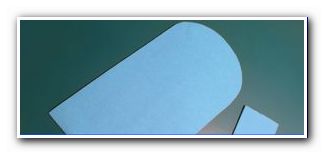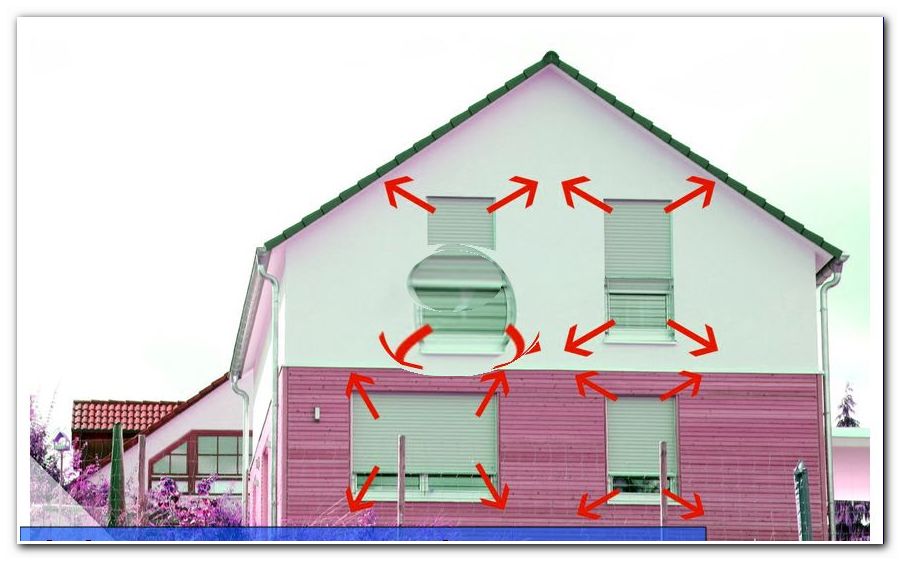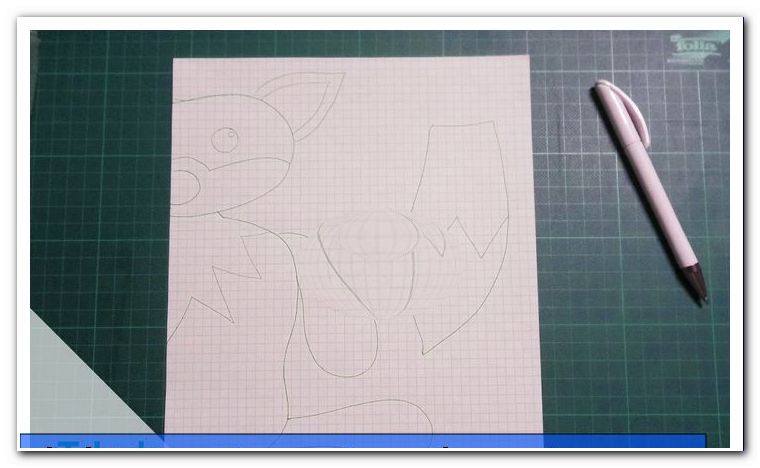Attach baseboards correctly - instructions in 5 steps

- Depth and height of the strips
- Hiding pipes and cables
- Attach baseboard - step by step instructions
For most new floor coverings, such as parquet or laminate, a matching skirting board as a wall finish is indispensable. In the case of a floating laminate, the skirting board belongs to the system, so to speak, because it covers the joint on the edge of the laminate. Here are the instructions for attaching baseboards in five easy steps.
Skirting boards or baseboards are not only necessary for a visual supplement of the floor covering. They also protect the wallpaper in the lower area. In addition, the bars have to do a lot in the course of their lives. With brooms and vacuum cleaners, the baseboards are pushed and squeezed by furniture that is too close to the wall. All these actions make the durability of the skirting board on the wall very much to create. Although there are strips that are simply glued, but for a long time the self-adhesive rubber strips usually do not hold. Therefore, here in the guide, we show you how to mount the baseboards properly and durable.
You need this:
- Japan saw / table saw
- Cutter knife / carpet knife
- Miter saw, miter box
- Ruler, pencil
- hammer
- Screwdriver, cordless screwdriver
- Drill, drill, countersink
- skirting
- matching inside and outside corners
- Apertures for pipe penetrations
- Screws, dowels, nails
- Installation glue
- abrasive paper
For most laminate or parquet floors there is just the right decor as a baseboard. Then it makes no sense to use a different material or a real wood trim. At most, the modern very simple Aluleisten, which adapt to any decor, then make a sense. But you should make that dependent on the rest of the furnishings of the rooms. However, if laminate panels have been laid, which have no real wood veneer, but a plastic decorative surface, then in no case real wood strips should be installed. Real wood will always darken over time and so later no longer fit the plastic-based floor. The reverse is the case, of course. Plastic strips, which are combined to a real wood floor, act like a very cheap foreign body after one year at the latest.

exceptions prove the rule
If you do not find matching baseboards to your flooring or perhaps want to put an accent, then use real wood and paint it in color. Anyone who prefers furniture in the white country house style will surely find a nice complement to the style in white baseboards. If you have installed many wood shades in the house, it can be an exciting change if the strips are painted along the wall in a bright red hue. This may not be for everyone, but there are so many possibilities that really make a harmonious round solution despite their unusual colors.
Depth and height of the strips
The baseboards are often used to hide the expansion joint between the floor and wall, especially when the floor was laid floating. This expansion joint can be different in strength. Do-it-yourselfers who have just laid a laminate floor for the first time do not necessarily achieve a uniformly wide seam on the edge. You can then compensate for the problem with a slightly stronger bar. If you have laid a plank floor, you can also use the same planks as baseboards.

Tip: Most plank floors are available with tongue and groove as well as simply without these connections. If there is no special groove without tongue and groove, you can plan the feather off with an electric planer or a belt sander. The groove is then placed on the lower side of the baseboard. So she does not bother. You can even use all the planks where the feather was damaged during the work and therefore could not be used.
Hiding pipes and cables
In some older houses, the heating pipes run down the wall. This may be very convenient for any water damage that may occur, but is quite a hindrance when attaching baseboards. However, there are matching models that may seem a bit clunky at first glance. But behind these bars, pretty much everything that runs along the walls can disappear. The cables for television, telephone or internet as well as the home cinema system can be perfectly concealed behind these systems. The strips are attached to the wall with a click system. All you need to do is hang the brackets in the wall and simply click on the strips.

Attach baseboard - step by step instructions
These instructions show how to attach baseboards attached with a clip system as well as a bolted solid wood skirting board. You should only nail a skirting board today if the ground is soft enough, such as a wooden wall. On a massive wall, there are too many failures to effectively and cleanly attach a baseboard.
Tip: Although the self-adhesive baseboards are not particularly durable, but on a very smooth flat surface, the baseboards can be adhered with mounting adhesive. Not every kind of bar is suitable for that. Anyway, as a tenant of an apartment, you should think twice about pasting on a skirting board that will later be difficult to remove. However, the method is stable if the basic requirements are correct and a high quality adhesive is used. However, the wall must be really flat. In case of doubt, you must first smooth out uneven areas with leveling compound.
Step 1 - Counting and counting corners
Although you should measure very precisely how many baseboards you need. Take into account the lengths and their distribution on the wall. The individual lengths can not simply be added together, because then you have a whole collection of end pieces on a wall later. You should also plan exactly where larger furniture stands. Then it makes sense to place the interface there. If you want to use corner joints instead of sawing the skirting board yourself, you will need a little less ledge. However, if you want to work out the mitres correctly, you must also take blends with purchase. In any case, you should buy a bit more bars than you actually need. Now count the inner and outer corners to have the right number of connections.

Tip: Many do not dare to miter sawing a bar and then just put bars together bluntly. This is really unattractive and ruins the whole look of new flooring and skirting in one go. It is not so difficult to miter a baseboard, you only have to visualize the result you want and use the miter box accordingly. A corresponding manual can be found here: LINK
Step 2 - Drill holes
Pay attention to the course of electrical cables and pipes that might be in the wall. Everything is possible with an old building, so you should use a cable detector to briefly check what is in the wall before you drill into it. If you have a porous sandy wall, you should use the dowels with a little plaster or mounting adhesive. This will prevent the screw from turning later when you try to put it on. The dowel holes should have a distance of about 50 centimeters. Spread the holes evenly over the wall and ledges, especially when placing visible screws in real wood strips.

Tip: If you want to dowel a real wood strip directly on the wall, you should first place the holes in the strip and then mark it with a ballpoint pen refill on the wall. The hole in the wood should always be sunk slightly. If you have multiple drills, you can equip one with the countersink, then you do not need to constantly change the drills. Even in living rooms, it makes sense to use either stainless steel screws or brass screws, depending on the wood color. When you wipe the floor, some moisture gets on the screws, which then rust or start. This can not happen with brass or stainless steel screws.
Step 3 - Cut the skirting board
In places where the bars are dull, it is very easy to saw off the bar. But at the corners and angles sometimes has to be considered a bit. If in doubt, hold the strip against the wall several times after drawing the cut. Check three times if your miter is pointing in the right direction. Under no circumstances should all strips be pre-sawn. There is always a change in the plan, the cuts would be mostly in the wrong place.

Tip: If you sawed the strips miter, they often still do not fit perfectly together. Hold the strips together before screwing them together. You may have to rework the cut edges a little with sandpaper.
Step 4 - Attach the skirting board
If you are using clips for the skirting boards, you should first apply all clips before clipping on the individual strips. Some systems are quite stiff. You can help with a rubber mallet, but you should put cardboard or an old rag on the strip so as not to damage it. If you want to screw the entire wooden strip, you should first secure the screws and strips with a few turns in the wall. Only when all parts are in place should you tighten the screws completely. This makes it easier to compensate for slight irregularities in the wall.
Tip: Especially with laminate or parquet it is more practical to use a skirting board which is fastened invisibly with mounting clips. You can then keep the distance to the flooring well, so that the floor and the baseboard can not squeak together when the wood works later. Compared to a real wood trim here is also the invisible attachment highlight.

Step 5 - Cut off vapor barrier or foil
The vapor barrier under a floating floor to prevent the rise of moisture. But it is important that the film at the edges, so on the wall, a bit is pulled up. If the baseboard is attached, is often a little bit of the slide above. This part must now be cut off. This works best with a craft knife or a utility knife.
Tip: To avoid having to cut around with the utility knife on the new skirting board, you should cut off the film before attaching the strip. On this occasion, you can glue the vapor barrier directly to the wall. A wide silver fabric tape is ideal for this because it secures the film while retaining the moisture. So the moisture does not rise behind the baseboard and may penetrate the wallpaper.
Tips for quick readers
- Selection of baseboard according to height and thickness
- Decor Select baseboard matching the floor
- Measuring the required strips
- Counting the inner and outer corners
- Skirting board with mounting adhesive on a flat surface
- Drill holes or nail bar
- Use dowels with assembly adhesive
- Attach retaining clips with screws
- Sawing the footrest / insert the miter box correctly
- Lightly sink holes in wooden strip
- Clip on / screw on skirting board
- Tighten screws gradually
- Cut off protruding vapor barrier with cutter knife
- if necessary, glue the vapor barrier




